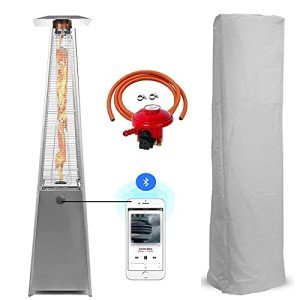Why We Do We Love Buy Gas Radiant Heaters (And You Should Also!)

Buying Gas Radiant Heaters: A Comprehensive Guide
Gas radiant heaters have acquired popularity over the last few years for their effectiveness and capability to offer instant heat. As more property owners and organizations look for ways to keep their areas comfy, understanding the features, benefits, and considerations when buying these heating systems can be really useful. This article looks into the intricacies of gas radiant heaters, assisting prospective purchasers in making notified choices.
What are Gas Radiant Heaters?
Gas radiant heaters are devices that make use of propane or gas to release heat directly into a room. Instead of heating the air, they warm things and individuals in their vicinity, supplying convenience more rapidly and effectively. These heaters are popular for both indoor and outdoor settings due to their adaptability and effectiveness.
Key Features of Gas Radiant Heaters
- Direct Heating: Unlike traditional heaters that warm the air, gas radiant heaters provide direct heat, making them an efficient choice for rapidly heating up areas.
- Mobility: Many models are available as portable systems, enabling them to be easily moved from one location to another.
- Fuel Variety: Gas radiant heaters can be powered by gas or propane, giving users versatility based on schedule and preference.
- Adjustable Settings: Most gas radiant heaters included adjustable heat settings, enabling users to customize the level of warmth based on their needs.
Benefits of Gas Radiant Heaters
- Energy Efficiency: These heaters transform gas into heat effectively, leading to lower utility expenses compared to electrical heaters.
- Quick Heating: Radiant heat is felt practically right away, making these heaters perfect for sudden temperature drops.
- Low Maintenance: Gas radiant heaters normally need less upkeep than electric designs, making them a hassle-free option.
- Environmentally Friendly: When powered by clean gas, these heaters can be a more ecologically sustainable option compared to other heating techniques.
Kinds Of Gas Radiant Heaters
When it concerns selecting a gas radiant heater, it's important to understand the various types available. Below are the most common options:
- Indoor Gas Radiant Heaters: Designed for indoor areas, these heaters are generally vented or unvented and typically featured built-in safety functions.
- Outdoor Gas Radiant Heaters: Commonly used in outdoor patios or outdoor dining areas, these heaters are designed to withstand the elements.
- Wall-Mounted Gas Radiant Heaters: A space-saving option, these systems are ideal for smaller sized areas and can be equipped with different heat outputs depending on the area's requirements.
- Freestanding Gas Radiant Heaters: These portable models can be used in various places, best for those who need flexibility.
Buying Guide: How to Choose the Right Gas Radiant Heater
When buying a gas radiant heater, a number of factors should be thought about to ensure you pick the right model for your space:
1. Heating Capacity
- Determined in BTUs (British Thermal Units), the heater's capacity identifies how much area it can efficiently warm. Purchasers need to assess their specific needs based on space size.
| Space Size (sq feet) | Recommended BTUs (for Gas Radiant Heaters) |
|---|---|
| 100 - 200 | 5,000 - 10,000 BTUs |
| 200 - 400 | 10,000 - 20,000 BTUs |
| 400 - 600 | 20,000 - 30,000 BTUs |
| 600 - 800 | 30,000+ BTUs |
2. Kind of Gas
- Think about whether you will be using propane or gas, as various heaters accommodate different fuel types.
3. Security Features
- Try to find designs equipped with security functions such as automatic shut-off valves, tip-over protection, and oxygen exhaustion sensors.
4. Setup Requirements
- Some heaters might need professional setup, specifically vented designs. Make certain to consider the expenses and requirements related to setup.
5. Mobility
- If flexibility is essential, consider portable designs that can be quickly moved from one area to another.
Installation and Maintenance
Gas radiant heaters are usually simple to set up, particularly portable models. Nevertheless, vented options may require professional installation to ensure they meet regional security codes.
Maintenance normally involves:
- Regular cleaning to avoid dust accumulation.
- Inspecting gas connections and fittings for leaks.
- Guaranteeing security functions are practical.
Idea: Regular checks around the system can help extend its lifespan and keep security.
Regularly Asked Questions (FAQs)
Q1: Are gas radiant heaters safe for indoor use?A1: Yes
, as long as they are appropriately vented and geared up with essential security features, they can be securely used indoors.
Q2: Can gas radiant heaters be used in enclosed spaces?A2: Unvented gas heaters can present dangers in enclosed areas due to possible suffocation or carbon monoxide accumulation. Always make sure adequate ventilation. Q3: How do I understand what size heater I need?A3: The appropriate size depends upon the location you intend to heat. Refer to the BTU chart
above to identify your requirements. visit my home page : What is the distinction in between propane and natural gas heaters?A4: The main difference depends on their energy source
; propane is provided via tanks, while gas is generally piped into homes. Q5: How can I maximize efficiency?A5: Ensure the heater is appropriately sized for your space, keep it frequently, and think about using it in mix
with other heating approaches for maximum convenience. Gas radiant heaters can be a great addition to any home or service, offering energy-efficient and quick heating solutions. By understanding the various types, features, and considerations
when acquiring, buyers can make informed decisions that fulfill their heating needs. With the best option, these heaters provide comfort, dependability, and an inviting environment during chillier seasons.

